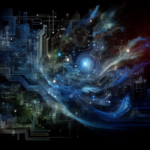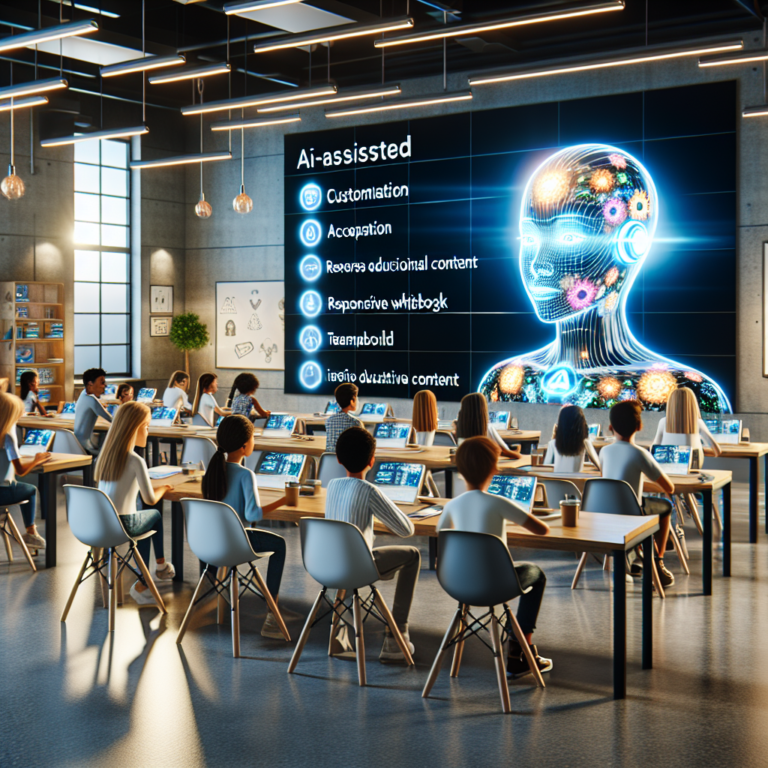Revolutionizing Education: Could AI-Driven Avatars Become Our Future Classroom Teachers? 🎓
The Rise of AI in Education
In the digital age, technology has transformed every aspect of our lives, ranging from how we communicate to how we learn. One of the most exciting advancements in this realm is the emergence of AI-driven avatars. For instance, imagine stepping into a classroom where AI-powered avatars serve as educators, fully engaged and capable of delivering personalized instruction to each student. Indeed, this futuristic concept may not be as far-fetched as it seems!
Why Consider AI-Driven Avatars as Teachers?
As we explore the potential of AI in the classroom, it’s important to consider the numerous advantages that AI-driven avatars could bring to education:
- Personalization: AI avatars can analyze individual student performance in real time, adapting teaching styles and resources to meet each learner’s unique needs.
- Scalability: A single AI avatar can effectively teach hundreds of students simultaneously, breaking geographical barriers and providing education in remote areas.
- Consistency: Unlike human teachers who may have off days, AI avatars provide a consistent learning experience, ensuring students receive the same quality of instruction every day.
- Engagement: With their ability to leverage interactive simulations and gamified learning, AI avatars can make lessons more engaging and enjoyable.
The Classroom of Tomorrow
Visualize a classroom filled with eager learners, their eyes glued not to a human instructor but to a dynamic, responsive avatar projected on a screen. These AI avatars could adapt their behavior and communication styles based on real-time feedback from students, resulting in a highly personalized educational experience. Teachers would become facilitators, guiding the learning process instead of being the sole providers of knowledge.
AI Avatars: A Teacher’s Assistant in Disguise
While the thought of AI taking over the role of a teacher might seem overwhelming, it’s essential to recognize that AI avatars can work hand-in-hand with human educators. Here’s how:
- Homework Help: After school, students could access AI avatars for assistance with homework, allowing teachers to focus on more complex discussions during classroom time.
- Feedback and Assessment: AI can provide immediate feedback on student performance, helping teachers identify areas where students may need additional support more quickly.
- Incorporating Data: By analyzing extensive data, AI avatars can suggest curriculum adjustments and highlight educational trends that teachers may have overlooked.
Enhancing Inclusivity with AI Avatars
AI avatars hold the potential to make classrooms more inclusive. Students with different learning needs often require tailored approaches to thrive. AI-driven avatars can:
To assist interpreters, avatars could incorporate sign language into their teaching, thus making learning more accessible for hearing-impaired students.
Additionally, language support could be offered, as AI avatars would be able to operate in multiple languages, thereby providing support for non-native speakers and ensuring they feel welcome in the classroom.
However, there are also challenges and considerations to keep in mind.
Of course, the path to incorporating AI-driven avatars into classrooms isn’t without its hurdles. Consider the following challenges:
- Technological Barriers: Not every school is equipped with the latest technology. Investment in infrastructure is vital to bring this vision to life.
- Quality of Interaction: While AI can simulate conversation, the emotional intelligence and empathy displayed by human teachers may be difficult to replicate.
- Ethics and Privacy: How do we ensure that student data used by AI avatars remains private and secure?
Exciting Innovations in AI Avatars
Many organizations are pioneering research and development in AI-driven avatars for education. Here are some noteworthy innovations:
- Gamification: Avatars can incorporate game-like elements into lessons, turning mundane subjects into exciting challenges that motivate students.
- Adaptive Learning: Some AI systems already customize learning materials based on student responses, enhancing retention and understanding overtime.
- Social Integration: AI avatars could facilitate peer-to-peer learning, encouraging students to collaborate and tackle complex problems together.
The Vision Ahead: A Harmonious Blend of AI and Human Teachers
As we think about a future where AI-driven avatars play an essential role in education, it’s important to envision a world where technology and human interaction harmoniously coexist. While these avatars could handle instructions and immediate feedback, human teachers would continue to nurture critical thinking, social skills, and emotional growth. In this idyllic scenario:
- Avatars lead: AI-driven programs provide instruction and immediate support.
- Teachers mentor: Human educators focus on fostering creativity and emotional intelligence.
- Collaboration: Both AI and human teachers work as a team to ensure a holistic educational experience.
Imagining the Future of Education
What if tomorrow’s classrooms are filled with both AI avatars and dynamic human teachers, working in unison to prepare students for an ever-changing world? As we explore the potential of AI-driven avatars in education, we stand on the brink of a revolution that could enhance learning experiences, make education more accessible, and create a brighter future for students worldwide.
By embracing technology, we take a step towards a more inclusive and engaging classroom, where the joy of learning knows no bounds. Are you ready to welcome AI-driven avatars into our classrooms?




0 Comments